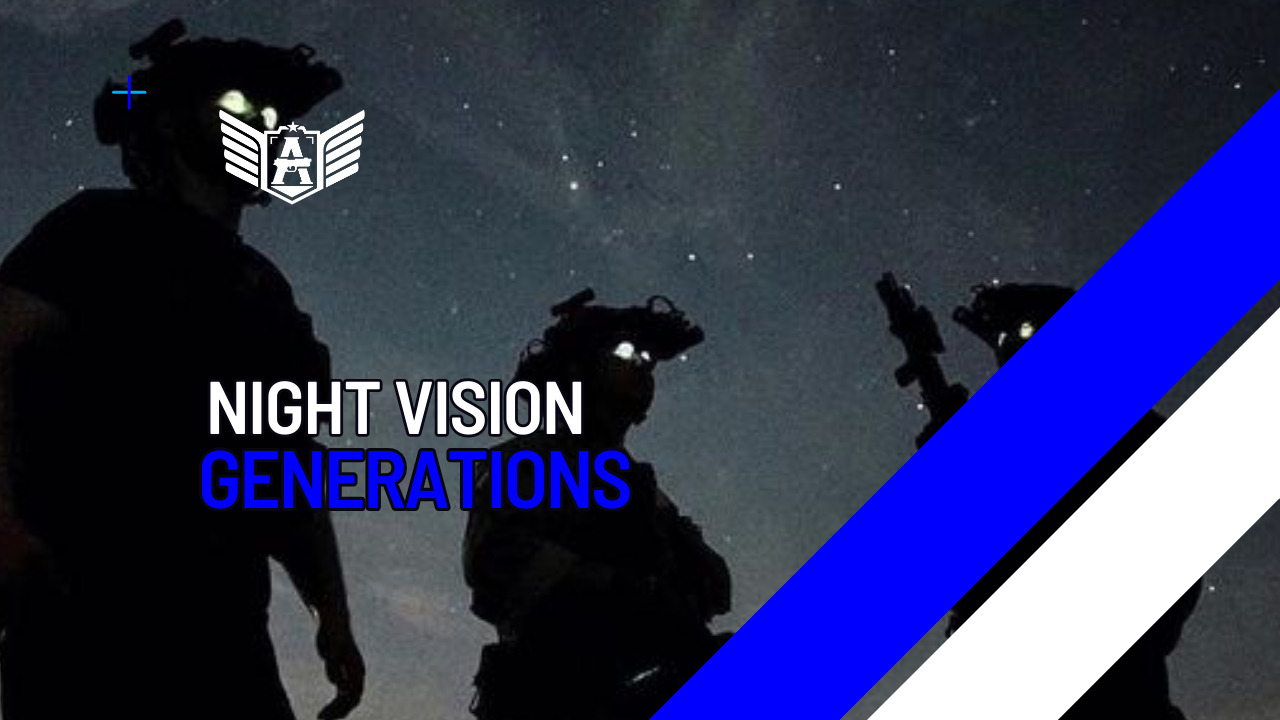Night vision technology has evolved through four generations, each marked by significant advancements. Let’s explore the characteristics and features of each generation:
1. First Generation (GEN 1)

First-generation night vision is currently the most widespread and cost-effective type. It operates on basic principles, amplifying existing light several thousand times to provide a bright and sharp image in low-light conditions. Commonly used for activities like boating, wildlife observation, and home security.
The inception of night vision technology saw the development of 1st generation devices that revolutionized low-light visibility. These devices heavily relied on ambient light, which was amplified to generate discernible images. Despite their functional utility, 1st generation devices exhibited limitations, including a somewhat blurry and narrow field of view. Additionally, their bulkiness and the high initial cost posed challenges. However, with subsequent technological advancements, these devices became more accessible and affordable to civilians.
2. Second Generation (GEN 2)

A significant breakthrough in night vision occurred with the advent of 2nd generation technology, introducing the microchannel plate (MCP). Placed strategically between the photomultiplier tube’s emitter and detector, the MCP played a pivotal role in further amplifying the electron cascade. The outcome was a substantial improvement in image quality, with clearer and brighter visuals featuring notably reduced distortion compared to their 1st generation counterparts.
Features of 2nd Gen IIT ATNs:
- Photo Cathode type: Multi-Alkali
- Resolution: 40 to 45 lp/mm
- Signal-to-Noise Ratio: 12 to 20
- Tube life: 5,000+ hours
CGT IIT (2nd Gen):
- Photo Cathode type: Multi-Alkali
- Resolution: 45 to 54 lp/mm
- Signal-to-Noise Ratio: 16 to 22
- Tube life: 10,000 hours
HPT IIT (2nd Gen):
- Photo Cathode type: Multi-Alkali
- Resolution: 55 to 72 lp/mm
- Signal-to-Noise Ratio: 16 to 24
- Tube life: 10,000 hours
3. Third Generation (GEN 3)

The hallmark of 3rd generation night vision was the incorporation of gallium arsenide into the device’s photocathode. This strategic addition significantly heightened the device’s photo response, resulting in even brighter and sharper images. To enhance the overall functionality, an ion barrier film was introduced to the MCP, increasing the tube’s life and reliability. The 3rd generation quickly became the standard for the USA military.
Features of 3rd Gen FOM 1250 (3I) IIT:
- Photo Cathode type: Gallium Arsenide
- FOM: <1250
- Resolution: 51-64 lp/mm
- Signal-to-Noise Ratio: 18 to 24
- Tube life: 10,000 hours
Features of 3A Gen. Premium select IIT:
- Photo Cathode type: Thin Film GaAs
- Resolution: 64 to 72 lp/mm
- Signal-to-Noise Ratio: 26
- Tube life: 10,000 hours

4. Fourth Generation (GEN 4)

Considered the pinnacle of night vision technology, the 4th generation marked a transformative shift by eliminating the ion barrier film present in the 3rd generation. This innovation led to an even higher signal-to-noise ratio, enabling the generation of exceptionally clear and bright images, especially in extremely low-light conditions. Despite the substantial advancements, 4th generation devices command a premium price tag. However, the unparalleled clarity and performance justify the cost, positioning them as the cutting edge in the realm of night vision technology.
Features of 4th GEN. GATED/FILMLESS IIT:
- Photo Cathode type: Filmless GaAs
- Resolution: 64 to 72 lp/mm
- Signal-to-Noise Ratio: 25 to 30
- Autogated power Supply
- Tube life: 10,000 hours
In summary, night vision technology has advanced significantly from its inception, offering improved performance, resolution, and versatility with each successive generation. The choice between generations depends on specific needs and the level of performance required in different lighting conditions.





